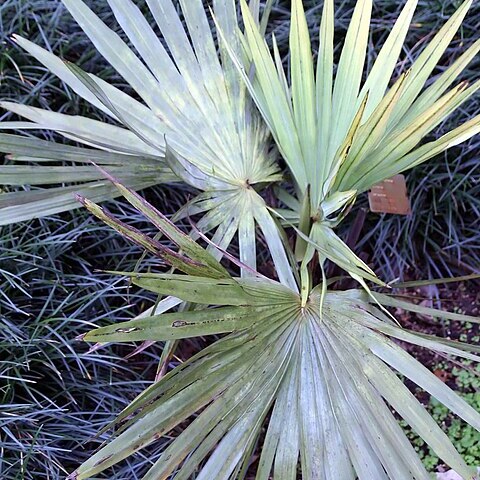Trunk to 21 m tall, 10–15 cm diam., grey; leaf bases often persistent. Leaves 9–20 in an open crown; petiole 50–200 cm long, 1.4–2 cm wide, arcuate, thorny on margins; leaf blade nearly circular, 60–90 cm long, coriaceous, pale greyish green, pruinose, abaxially glabrous, divided for more than 1/2 its length; segments 40–50, rigid, deeply bifurcate, with acute lobes. Inflorescence 100–200 cm long, branched to 4 orders; bracts with appressed scales; rachillae glabrous. Flowers solitary or in sympodial clusters of 2–4, campanulate, cream to yellow; sepals broadly ovate, 0.2–1 mm long, acute, fleshy; petals narrowly ovate, 0.5–1.9 mm long, acute, thick; stamens c. 1.5 mm long. Fruit ellipsoid to obovoid, 12–16 mm long, glossy, purple-black. Seed ellipsoid, 10–13 mm long.
More
A palm which grows up to 8-13 m tall. The trunk is 14 cm across. The leaves form a small, sparse crown. The trunk has square areas near the base and rings further up. The leaves are bright green. Fronds emerge folded down the middle into two equal halves. Often the dead fronds hang beneath the crown.


